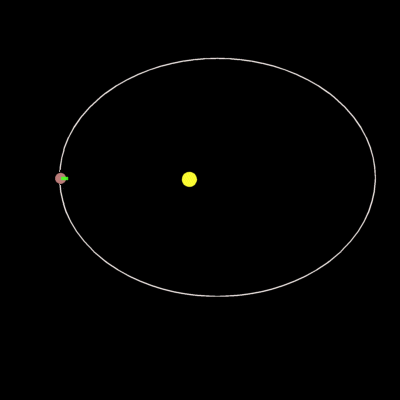
For many years it was assumed that Mercury always showed the same face to the Sun in the same way that the Moon always shows the same face to the Earth. This would be caused by the large tidal forces exerted on Mercury by the Sun. Synchronous rotation occurs when the period of revolution equals the period of rotation (i.e. a ratio of 1:1). Accurate measurements of Mercury using radar echoes bounced of the planet revealed that its period of rotation (58.65 days) is equal to two thirds its orbital period (87.97 days), the ratio is 3:2). The general term applied to a tidally locked body such as the Moon or Mercury is spin orbit coupling.
